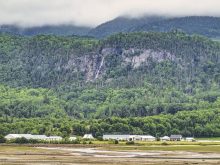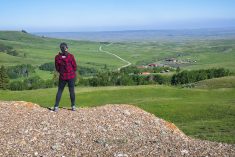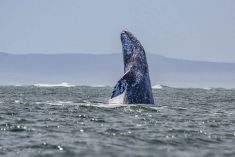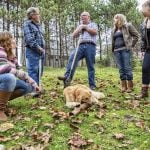Percé Rock is among the most recognizable landmarks along Canada’s East Coast. The imposing limestone island reaches 85 metres high and close to a half-kilometre long. The name Percé (French for “pierced”) comes from its 30-metre-wide hole, considered the largest stone arch over water in the world.
The monolith lies next to the town of Percé on the eastern edge of Quebec’s Gaspé Peninsula in the Gulf of St. Lawrence. Like most visitors, we arrived while taking a road trip along the Gaspé coastline, considered one of Canada’s top scenic drives. While the route abounds in outstanding scenery, nowhere matched the visual impact of coming over the last hill and suddenly seeing the iconic rock looming over the landscape. But as we were to find out, there is a lot more to Percé than gazing over a pretty rock.
Percé is a pleasant seaside town based on fishing and tourism. Long and narrow, the town is sandwiched between the sea and the mountains just inland. A long boardwalk lines the beach, where visitors relax on benches or in the small park to enjoy the view.
Read Also

Starting a small business comes with legal considerations
This article sets out some of the legal considerations to start a business to sell home-grown product, such as vegetables, herbs, fruit or honey.
In 2018, Percé was recognized as a UNESCO Global Geopark because of its geological significance including the famous rock, mountains, islands, and rich wildlife. The visitor centre in town brings to life the ancient tectonic events that created the Appalachian Mountains that run through the area, shaping the land we see today.
The geopark runs guided tours of the historic town where houses of sea captains are reminders of the golden age of the cod fishery. Mountain slopes behind the town have hiking trails where visitors can wander on their own or take guided walks run by the park. One area has been dubbed the Magical Forest where a valley of gnarly twisted cedar trees seems like something out of The Lord of the Rings. The highlight is the suspended glass platform that juts out from the cliff face 200 metres above the terrain below where we look over the sweeping view of the town, rock, coastline, and islands.

Bonaventure Island lies about five kilometres offshore, noted as one of Canada’s, and the world’s, most important sea bird colonies. While providing refuge to several bird species, the island is best known as the site of North America’s largest northern gannet colony, home to more than 100,000 birds some years.
We visited the island on a tour boat, first slowly cruising around Percé Rock, looking even more imposing up close. Then we circled Bonaventure Island, the sheer cliffs on its north side rising to 75 metres. It seemed as if we were sailing through a wildlife documentary as thousands of birds covered every notch in the cliff and filled the air, while seals lounged on rocks at the base of the cliffs.
We landed at the dock on the lower side of the island. Visitors could take as long as they wanted to explore if they returned in time to take the last boat back to Percé. It took nearly an hour to hike across the island to the main gannet colony. The trail ended at the breathtaking sight of thousands of the white birds packed together and sprawling across the gently rolling land above the cliffs. The nesting grounds are roped off to protect the birds, but we could get within 10 metres or so. The birds ignored human visitors.
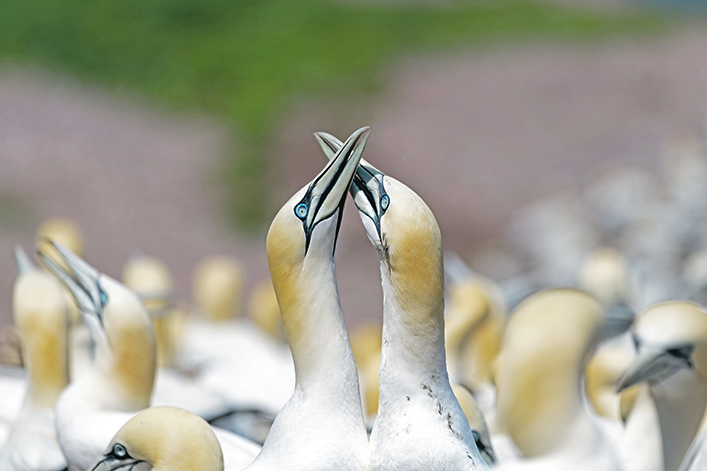
Gannets flew back and forth to the nests, often carrying grass or seaweed for nesting material. Landing in such a tightly packed mass of birds seemed a major effort, like finding the last spot in a crowded parking lot. When a gannet returns to its mate, the couple often goes through a complex greeting ritual of neck stretching and crossing bills.
On the morning we pack up to leave Percé, one last spectacle awaits, this time right in front of our beach-side motel. A few gannets were fishing nearby, their technique involving dive-bombing into the water to grab a fish. We delayed our departure, took lawn chairs from the motel and watched the show. To top things off, a couple of Minke whales even surfaced nearby. It was a hard place to leave.

For more details on Percé and the Gaspé coast, see the Quebec Maritime website www.quebecmaritime.ca.
Arlene and Robin Karpan are well-travelled writers based in Saskatoon.
Contact: travel@producer.com.




